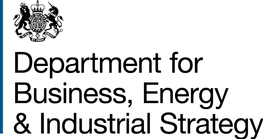CCSR/NIES GCM Model Information
Background Information
The model used here is a coupled ocean-atmosphere model that consists of the CCSR/NIES atmospheric GCM, the CCSR ocean GCM, a thermodynamic sea-ice model, and a river routing model (Abe-Ouchi et al., 1996). The spatial resolution is T21 spectral truncation (roughly 5.6º latitude/longitude) and 20 vertical levels for the atmospheric part, and roughly 2.8º horizontal grid and 17 vertical levels for the oceanic part. Flux adjustment for atmosphere-ocean heat and water exchange is applied to prevent a drift of the modelled climate.
The atmospheric model adopts a radiation scheme based on the k-distribution, two-stream discrete ordinate method (DOM) (Nakajima and Tanaka, 1986). This scheme can deal with absorption, emission and scattering by gases, clouds and aerosol particles in a consistent manner. In the calculation of sulphate aerosol optical properties, the volumetric mode radius of the sulphate particle in dry environment is assumed to be 0.2 micron. The hygroscopic growth of the sulphate is considered by an empirical fit of d'Almeida et al. (1991). The vertical distribution of the sulphate aerosol is assumed to be constant in the lowest 2 km of the atmosphere. The concentrations of greenhouse gases are represented by equivalent-CO2.
Three integrations are made for 200 model years (1890-2090). In the control experiment (CTL), the globally uniform concentration of greenhouse gases is kept constant at 345 ppmv CO2-equivalent and the concentration of sulphate is set to zero. In the experiment GG, the concentration of greenhouse gases is gradually increased, while that of sulphate is set to zero. In the experiments GS, the increase in anthropogenic sulphate as well as that in greenhouse gases is given and the aerosol scattering (the direct effect of aerosol) is explicitly represented in the way described above. The indirect effect of aerosol is not included in any experiment.
The scenario of atmospheric concentrations of greenhouse gases and sulphate aerosols is given in accordance with Mitchell and Johns (1997). The increase in greenhouse gases is based on the historical record from 1890 to 1990 and is increased by 1% / yr (compound) after 1990. For sulphate aerosols, geographical distributions of sulphate loading for 1986 and 2050, which are estimated by a sulphur cycle model (Langer and Rodhe, 1991), are used as basic patterns. Based on global and annual mean sulphur emission rates, the 1986 pattern is scaled for years before 1990; the 2050 pattern is scaled for years after 2050; and the pattern is interpolated from the two basic ones for intermediate years to give the time series of the distribution. The sulphur emission rate in the future is based on the IPCC IS92a scenario. The sulphate concentration is offset in our run so that it starts from zero at 1890. The seasonal variation of sulphate concentration is ignored.
Discussion on the results of the experiments will be found in Emori et al. (1999). Climate sensitivity of the CCSR/NIES model derived by equilibrium runs is estimated to be 3.5 degrees Celsius.
Global-Mean Temperature, Precipitation and CO2 Changes (w.r.t. 1961-90) for the CCSR/NIES model
References
Abe-Ouchi,A. et al., 1996 Outline of coupled atmosphere and ocean model and experiment. Internal report, Centre for Climate System Research, University of Tokyo, Japan.
Emori, S., Nozawa T., Abe-Ouchi A., Numaguti A., Kimoto M., and Nakajima T. 1999 Coupled ocean-atmosphere model experiments of future climate change with an explicit representation of sulfate aerosol scattering. J.Meteor. Soc. Japan, (submitted).
d'Almeida,G.A. et al. eds., 1991 Atmospheric Aerosols: Global Climatology and Radiative Characteristics, A.Deepak Publishing, 561pp.
Langner,J. and Rodhe,H. 1991 A global three dimensional model of the tropospheric sulfur cycle. J.Atmos. Chem., 13, 225-263.
Mitchell,J.F.B. and Johns,T.C. 1997 On modification of global warming by sulphate aerosols. J.Climate, 10, 245-267.
Nakajima,T. and Tanaka,M. 1986 Matrix formulation for the transfer of solar radiation in a plane-parallel scattering atmosphere. J.Quant. Spectrosc. Radiat. Transfer, 35, 13-21.
Further Details
Ayako Abe-Ouchi (abeouchi@ccsr.u-tokyo.ac.jp) or Seita Emori (emori@nies.go.jp)
 "
"
